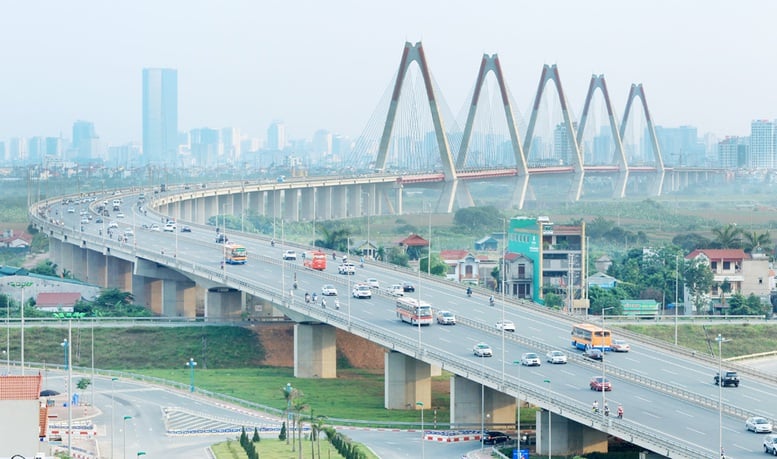
Every bridge, every metro line, every electricity grid or national data is a measure of institutional discipline, coordination capacity and social trust.
The content of infrastructure breakthroughs proposed by the Draft Political Report submitted to the 14th Congress is: "Continue to synchronously complete and make strong breakthroughs in building socio -economic infrastructure; especially multi-modal transport infrastructure, technological infrastructure serving the management, governance and development creation process, infrastructure serving digital transformation, green transformation, energy transformation, and adaptation to climate change".
This breakthrough needs to be understood in a systemic sense – not just expanding construction investment, but improving the operational capacity of the entire national infrastructure. The article proposes a new approach to infrastructure breakthrough, including a scientific priority setting method, five strategic investment pillars, and a modern implementation mechanism based on the National Project Management Office (NPMO) model.
Infrastructure – the material foundation of institutional development
After nearly four decades of implementing the Doi Moi process, Vietnam has achieved great achievements in economy, society and international integration. However, to enter the new era, In the new era of development - the era of innovation, greening and sustainability, our country needs a strong boost in economic and social infrastructure.
Infrastructure is not just about physical structures, but also about the country’s operational capacity – the ability to connect people, businesses, regions and value chains. Modern infrastructure reduces transaction costs, increases productivity, and opens up new development space. Conversely, poor infrastructure is a “huge bottleneck” in the development process.
Looking back over the past years, especially the 2021-2025 term, many large infrastructure projects have been invested in, but it is still necessary to continue to prioritize strategic infrastructure, especially ensuring synchronization, connectivity and spillover effects. This is the time we need to shift from the mindset of "building projects" to the mindset of "building systems" - considering infrastructure as an institutional component of national capacity.
The nature of "infrastructure breakthrough" in the new phase
“Breakthrough” is not just about accelerating investment, but about increasing the operational capacity of the entire system – measured in terms of time, cost and reliability of goods flows, people flows, energy flows and data flows.
A road is only truly meaningful when it connects to economic corridors, shortens transport times and reduces logistics costs. An electricity grid only reaches its full potential when it has the ability to intelligently dispatch, connect renewable energy sources and ensure national energy security. A digital infrastructure is only truly useful when it becomes the "backbone" of public administration and innovation.
Therefore, infrastructure breakthroughs need to be repositioned: from "expansion investment" to "operational design"; from "single sector" to "system linkage"; from "investment cost" to "lifecycle efficiency". This is an approach that demonstrates institutional vision and modern governance capacity.
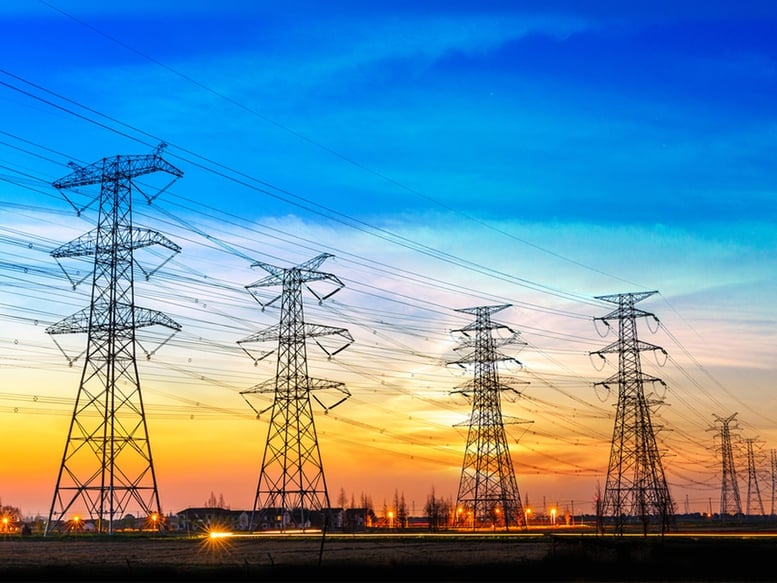
Priority should be given to investment in (i) energy infrastructure – power grid – storage and smart dispatching
Prioritization – the scientific basis for a long-term vision
Infrastructure investment is always a field that requires huge resources and a long implementation time. In the context of limited public budget, public debt must be controlled, and the ability to mobilize social capital is not strong, determining the right order of priorities and focusing on key investments is a prerequisite to avoid scattered, duplicated and ineffective investments. This is also an important orientation that the Government has consistently implemented in the 2021-2025 term.
First of all, it is necessary to unify three fundamental principles in setting infrastructure investment priorities:
1. Bottleneck first: focus on bottlenecks that are limiting the capacity of the entire system, such as power transmission infrastructure, inter-regional logistics corridors, or routes connecting seaports - industrial parks - border gates;
2. Prioritize results, not projects (Outcomes over assets): do not use the number of projects as a measure of achievement, but evaluate according to specific results - travel time, logistics costs, congestion reduction, and efficiency in serving people and businesses;
3. Maintain before expand: Investing in maintenance, upgrading and optimizing the operation of existing works must be considered a form of high-return investment, helping to save budget and prolong the life of public assets.
To ensure objectivity, it is necessary to apply the multi-criteria scoring system (MCDA) in project selection. Each infrastructure project should be evaluated according to a clear set of criteria, including: 1. Level of systemic impact and socio-economic efficiency; 2. Ability to connect value chains, economic corridors and dynamic regions; 3. Impact on climate adaptation and emission reduction; 4. Ability to mobilize extra-budgetary capital, especially through PPP, green bonds, carbon credits; 5. Readiness for implementation (land clearance, design documents, contractor capacity); 6. Ability to generate revenue and ensure sustainable operating and maintenance costs.
Along with that, four "final filter" tests should be applied to key national projects: 1. Chokepoint test: Is the project really located on an important bottleneck in the network? 2. Reliability test: Does the project help increase supply chain stability, reduce circulation time and costs? 3. Fiscal test: Does the project ensure the ability to balance capital, limit capital increase and maintain stable maintenance costs? 4. Expansion test: Does the project create new development space, paving the way for future technology applications and follow-up investments?
The application of these principles and tests not only brings transparency and consistency in investment selection, but also helps shift the focus of state management from "project approval" to "portfolio performance management" - that is, towards an evidence-based and results-based management mechanism. Then, each capital invested in infrastructure not only creates a specific product, a specific project, but also brings a new development capacity to the national economy.
Five strategic priority pillars for the 2026–2035 period
(1) Energy infrastructure – grid – storage and smart dispatching. Ensure energy security and promote green transformation. Focus on investment in inter-regional transmission, large-scale storage, smart dispatching and a complete competitive electricity market.
Encourage transmission PPPs and availability-based contracts to mobilize private capital.
(2) Multimodal logistics corridors and inter-regional logistics centers. Develop North-South and East-West corridors connecting seaports, border gates, and industrial parks. Build three regional logistics centers (North, Central, and South) as the core of supply chain coordination.
Target by 2030: reduce logistics costs/GDP to below 10%.
(3) Urban public transport and transport-oriented development (TOD). Hanoi and Ho Chi Minh City need to prioritize metro networks, BRT, and beltways, combining TOD planning - urban development around stations, exploiting land rent differences to finance infrastructure and social housing.
(4) Digital infrastructure and open data. Digital infrastructure is the "infrastructure of infrastructure". Invest in national data centers, government cloud computing (GovCloud), and National Digital Twin to manage integrated data on transportation, energy, water, and urban areas. 100% of key projects must apply Building Information Modeling. (BIM) for investment lifecycle management.
(5) Flood prevention and climate change adaptation infrastructure.
Prioritize Ho Chi Minh City, Hanoi, the Mekong Delta, and the Central Coast. Apply resilience standards, combine construction and natural solutions, and use carbon credits as a supplementary financial tool.
Implementation Mechanism – From Determination to Action Capacity
An infrastructure strategy only becomes a reality when there is a strong enough implementation mechanism.
Accordingly, it is possible to establish a National Key Project Portfolio Management Office (National PMO), operate a public dashboard system, and monitor each project according to the "signal light" model (red - yellow - green).
Perfecting the capital mobilization mechanism in the direction of modern public-private partnership, including the mechanism of re-exploiting public assets to reinvest in new infrastructure (asset recycling), the mechanism of combining public capital, ODA capital and private capital (blended finance), along with forms of PPP and green bonds, to expand the financial space for sustainable infrastructure development.
Infrastructure – a measure of governance capacity
Infrastructure development breakthroughs are a test of the country’s organizational and management capacity. A developed country is not only about economic scale, but also about the ability to implement large projects on schedule, with the right quality, and bring long-term efficiency and benefits. Each bridge, each metro line, each electricity grid or national data is a measure of institutional discipline, coordination capacity and social trust.
Therefore, along with infrastructure breakthroughs, it is necessary to have institutional breakthroughs (to remove legal constraints and create flexible space for investment) and human resource breakthroughs (to have a team of engineers, experts, and professional project managers).
Infrastructure breakthrough of vision 2045
If the 1986 Renovation was a revolution in economic institutions, then the 14th Congress needs to open a revolution in infrastructure institutions - a revolution of systemic thinking, of sustainable standards and of implementation capacity.
Every dollar of infrastructure investment must be measured in terms of system efficiency, national productivity, and people’s well-being. When infrastructure becomes the lifeblood of the country, Vietnam will have enough energy, connectivity, and resilience to enter an era of strong, modern, and sustainable development by 2045.
In the above spirit, I would like to propose adjusting the paragraph on infrastructure development breakthroughs in the Draft Political Report of the 14th National Congress:
"(3) Create a substantial breakthrough in economic and social infrastructure, ensuring synchronization, modernity, connectivity and sustainability. The focus is on developing a multimodal transport infrastructure system according to the logic of corridors - nodes - regional links, associated with integrated planning of land - transport - energy - digital - environment.
Prioritize investment in (i) energy infrastructure – power grid – storage and smart dispatch; (ii) strategic logistics corridors and inter-regional logistics centers; (iii) large urban infrastructure with public transport and transport-oriented development (TOD) models; (iv) digital infrastructure as a foundation for management, governance and innovation; (v) infrastructure for climate change adaptation and flood prevention in vulnerable areas.
Perfecting capital mobilization institutions towards standardized public-private partnerships (PPP), green bonds, carbon credits, ensuring efficiency, transparency and sustainable maintenance capacity.
Establish a National Key Project Portfolio Management Office (National PMO) to monitor investment progress and quality. Set specific performance targets by 2035, such as reducing logistics costs to ASEAN-4 levels, increasing the proportion of green transport, ensuring stable electricity supply and digital infrastructure covering urban areas, gradually forming a green-digital-resilient infrastructure network as a foundation for sustainable development.
Nguyen Si Dung
Source: https://baochinhphu.vn/gop-y-du-thao-bao-cao-chinh-tri-dai-hoi-xiv-cua-dang-bai-2-dot-pha-phat-trien-ha-tang-khong-chi-tang-toc-dau-tu-ma-con-can-don-bay-the-che-102251031232724314.htm


![[Photo] Ho Chi Minh City Youth Take Action for a Cleaner Environment](https://vphoto.vietnam.vn/thumb/1200x675/vietnam/resource/IMAGE/2025/11/04/1762233574890_550816358-1108586934787014-6430522970717297480-n-1-jpg.webp)

![[Photo] The road connecting Dong Nai with Ho Chi Minh City is still unfinished after 5 years of construction.](https://vphoto.vietnam.vn/thumb/1200x675/vietnam/resource/IMAGE/2025/11/04/1762241675985_ndo_br_dji-20251104104418-0635-d-resize-1295-jpg.webp)
![[Photo] Panorama of the Patriotic Emulation Congress of Nhan Dan Newspaper for the period 2025-2030](https://vphoto.vietnam.vn/thumb/1200x675/vietnam/resource/IMAGE/2025/11/04/1762252775462_ndo_br_dhthiduayeuncbaond-6125-jpg.webp)

![[Photo] Ca Mau "struggling" to cope with the highest tide of the year, forecast to exceed alert level 3](https://vphoto.vietnam.vn/thumb/1200x675/vietnam/resource/IMAGE/2025/11/04/1762235371445_ndo_br_trieu-cuong-2-6486-jpg.webp)


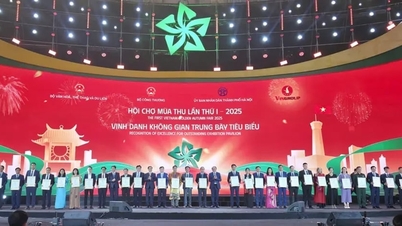











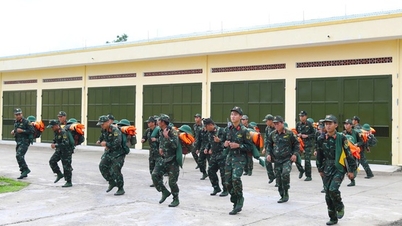







































































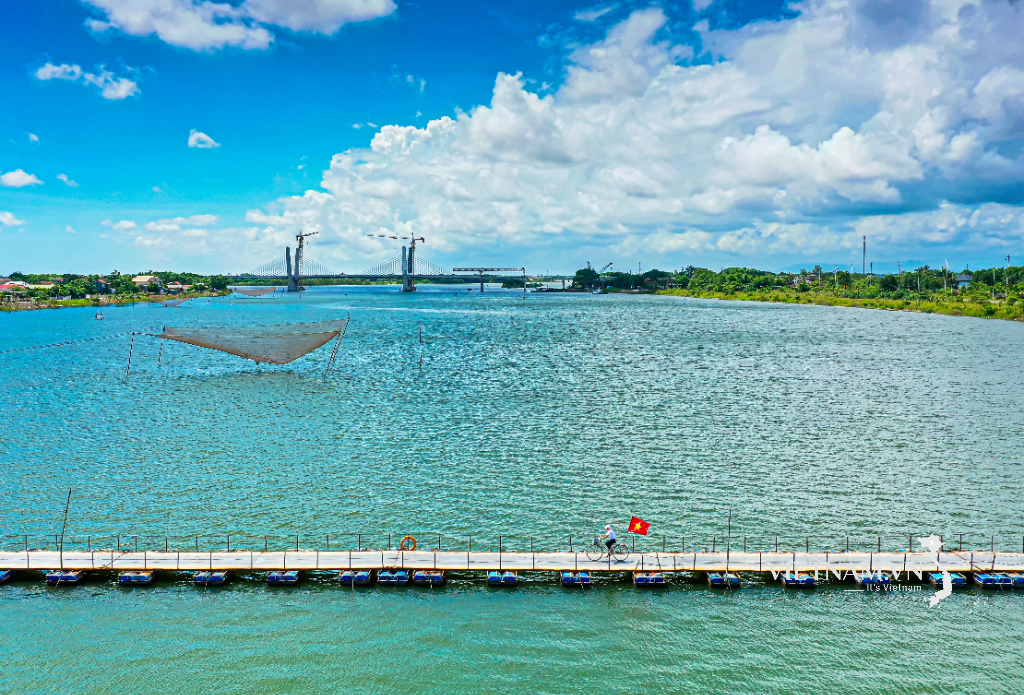



Comment (0)